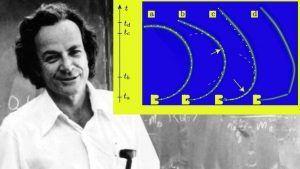Scotty Hendricks in Big Think:
 Here’s a fun experiment to try. Go to your pantry and see if you have a box of spaghetti. If you do, take out a noodle. Grab both ends of it and bend it until it breaks in half. How many pieces did it break into? If you got two large pieces and at least one small piece you’re not alone.
Here’s a fun experiment to try. Go to your pantry and see if you have a box of spaghetti. If you do, take out a noodle. Grab both ends of it and bend it until it breaks in half. How many pieces did it break into? If you got two large pieces and at least one small piece you’re not alone.
Richard Feynman, world-class physicist, bongo player, and writer of letters, once spent an evening trying to break spaghetti into two pieces by bending it at both ends. After hours spent in the kitchen and a great deal of pasta having been wasted, he and his friend Danny Hillis admitted defeat. Even worse, they had no solution for why the spaghetti always broke into at least three pieces.
The mystery remained unsolved until 2005, when French scientists Basile Audoly and Sebastien Neukirch won an Ig Nobel Prize, an award given to scientists for real work which is of a less serious nature than the discoveries that win Nobel prizes, for finally determining why this happens. Their paper describing the effect is wonderfully funny to read, as it takes such a banal issue so seriously.
They demonstrated that when a rod is bent past a certain point, such as when spaghetti is snapped in half by bending it at the ends, a “snapback effect” is created. This causes energy to reverberate from the initial break to other parts of the rod, often leading to a second break elsewhere.
While this settled the issue of why spaghetti noodles break into three or more pieces, it didn’t establish if they always had to break this way. The question of if the snapback could be regulated remained unsettled.
More here.
